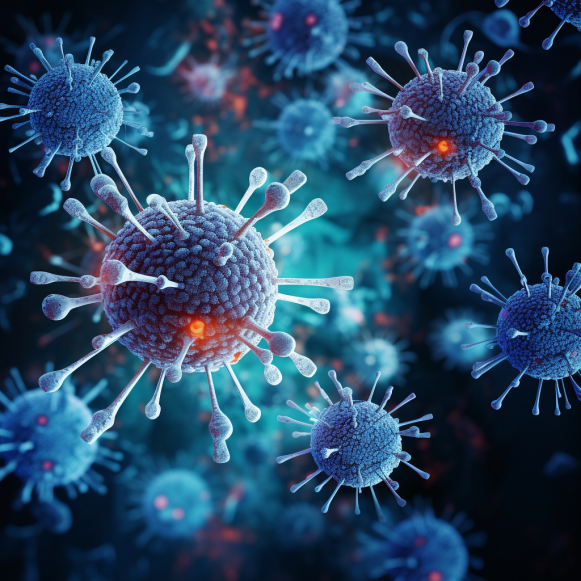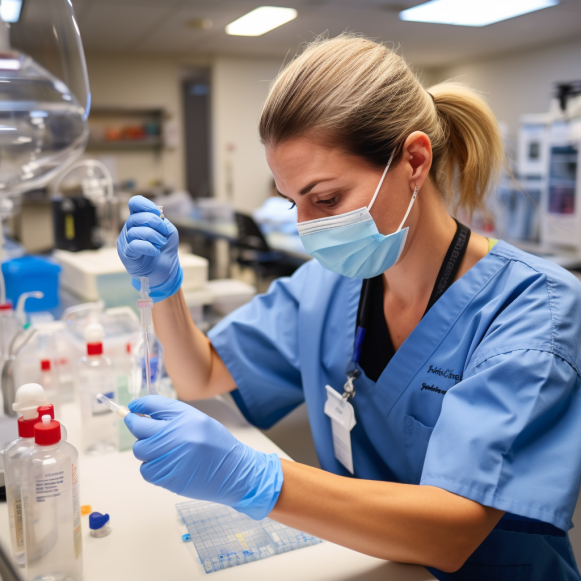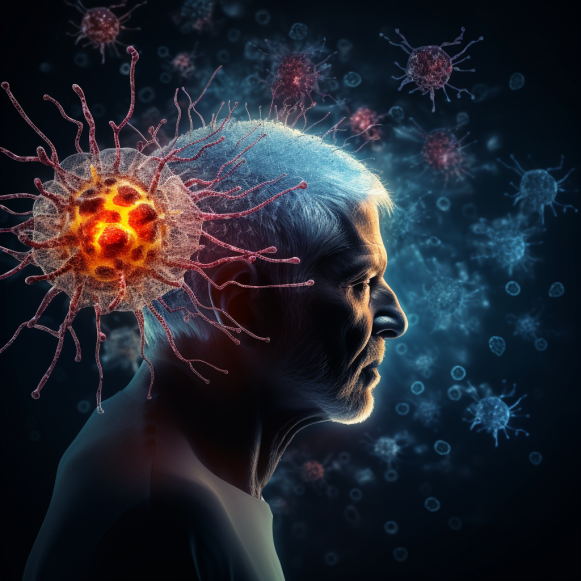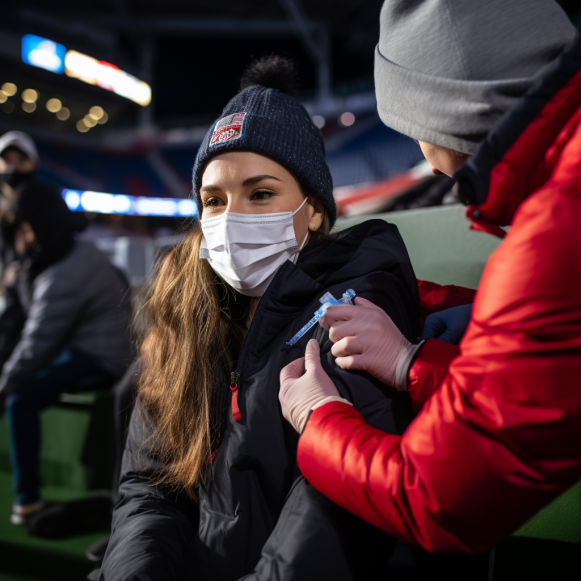COVID-19 ‘Vaccines’ Are Gene Therapy

The COVID-19 ‘vaccine’ is not a vaccine in the medical sense, but rather an experimental gene therapy that does not provide immunity or prevent infection or transmission of the disease.
AT-A-GLANCE STORY
Moderna and Pfizer’s mRNA “vaccines” are gene therapies. They meet all of the gene therapy definitions but none of the vaccine definitions. This is significant because you cannot mandate COVID-19 gene therapy any more than you can force entire populations to undergo gene therapy for a cancer that they do not have and may never be at risk for.
mRNA contains genetic instructions for the production of various proteins. mRNA “vaccines” introduce a synthetic version of mRNA into your cells, which contains the instruction to produce the SARS-CoV-2 spike protein, the antigen, which then activates your immune system to produce antibodies.
The only person who benefits from an mRNA “vaccine” is the vaccinated person, because they are only designed to reduce clinical symptoms associated with the S-1 spike protein. Because you are the only one who will benefit from the therapy, it makes no sense to require you to accept the risks “for the greater good” of your community.
Because mRNA “vaccines” do not meet the medical and/or legal definition of a vaccine — at least not until the CDC redefined the term “vaccine” — marketing them as such is a deceptive practice that violates the law that governs medical practice advertising.
COVID-19 has not even been proven to be caused by SARS-CoV-2. As a result, a gene therapy that instructs your body to produce a SARS-CoV-2 antigen — the viral spike protein — cannot be said to be COVID-19 preventive, because the two have not been shown to be causally linked.
mRNA ‘Vaccines’ Meet None of the Vaccine Criteria
To begin, let’s look at some basic word definitions. When these gene therapies were introduced, the Centers for Disease Control and Prevention defined a vaccine as “a product that stimulates a person’s immune system to produce immunity to a specific disease, protecting the person from that disease.”
Immunity was defined further as “protection from an infectious disease,” which means that “if you are immune to a disease, you can be exposed to it without becoming infected.”
That’s the CDC’s medical definition, which was in effect until September 1, 2021 — a point I’ll discuss further in the following section. In the few cases where it has been detailed, the legal definition is equally unambiguous:
The Iowa code [2] states: “Vaccine means a specially prepared antigen administered to a person for the purpose of providing immunity.”
Washington state statutes[3][4] — “Vaccine means a preparation of a killed or attenuated living microorganism, or fraction thereof …” The statute also states that a vaccine “stimulates immunity that protects us against disease…”
These definitions, both medical and legal, pose difficulties for mRNA “vaccines,” because mRNA injections do not confer immunity. Both Moderna and Pfizer admit that their clinical trials do not even address immunity. As a result, they did not meet the CDC’s medical or legal definition of a vaccine.
They have no effect on the spread of SARS-CoV-2 infection. As such, they do not meet the medical and/or legal definition of a vaccine — at least, not until the CDC changed its definition.
The CDC and dictionaries are attempting to rewrite medical terms.
Attempts to condition the public to accept redefined terms should not be taken seriously. At the time of this writing, Merriam-Webster defined “vaccine” as a “a preparation of killed microorganisms, living attenuated organisms, or living fully virulent organisms that is administered to produce or artificially increase immunity to a particular disease.” They had updated the definition of “vaccine” by February 26, 2021, to:[6] “A preparation that is administered (as by injection) to stimulate the body’s immune response against a specific infectious disease: a: an antigenic preparation of a typically inactivated or attenuated… pathogenic agent (such as a bacterium or virus) or one of its components or products (such as a protein or toxin) Let’s be clear about something. Merriam-Webster does not define medical terms. It can, however, be used to perplex people. For the time being, all medical dictionaries continue to use the traditional definition of vaccine, as Merriam-Webster did until this year. However, if the misrepresentation of COVID-19 mRNA vaccines is allowed to continue, I would not be surprised if changes are made there as well.
However, months after Merriam-Webster’s change, the CDC decided to change its definition of vaccine[8] to better match what mRNA gene therapies do. The CDC made that change just a week after the FDA gave full approval to Pfizer’s gene therapy, now known as Comirnaty.[9]
Vaccines are now defined by the CDC as a “preparation that is used to stimulate the body’s immune response against diseases.”
The distinctions in definitions are subtle but noticeable: The first described a vaccine as something that “produces immunity.” However, because the COVID-19 vaccines are not intended to prevent infection but rather to reduce the severity of infection, it is clear that the new definition was created specifically to cover COVID gene therapies.
mRNA therapy does not meet the requirements of the Public Health Measure Directive.
There’s also the question of whether gene therapy can be mandated, which may depend on its acceptance as a vaccine. The 1905 Supreme Court decision in Jacobson v. Massachusetts[10] established that collective benefit takes precedence over individual benefit.
“Since mRNA therapies do not render person immune, and do not inhibit transmission of the virus, they cannot qualify as a public health measure capable of providing collective benefit that supersedes individual risk, and therefore cannot be mandated.”
In other words, the ruling contends (though legal experts disagree on some of the finer points of its interpretation) that it is acceptable for some individuals to be harmed by a public health directive as long as the collective benefits. However, if vaccination is a public health measure intended to protect and benefit the entire population, it must accomplish two things:
Ascertain that the vaccinated person is immune to the disease.
Prevent disease transmission from the vaccinated person to other people.
We’re back to the original issue: mRNA therapies for COVID-19 don’t do either of these things. Because these gene therapies do not render the person immune and do not prevent virus transmission, they cannot be considered a public health measure capable of providing collective benefit that outweighs individual risk.
On the contrary, the only person who benefits from an mRNA “vaccine” is the person receiving gene therapy, because they are only designed to alleviate clinical symptoms associated with the S-1 spike protein.
In other words, they will not prevent you from becoming ill with SARS-CoV-2; they are only intended to alleviate your infection symptoms if and when you become infected. Getting vaccinated thus protects only you. Because you are the only one who will benefit (less severe COVID-19 symptoms upon infection), accepting the risks of the therapy “for the greater good” of your community is clearly irrational.
Marketing mRNA Therapy as a Vaccine is a violation of federal law.
Because mRNA “vaccines” do not meet the medical and/or legal definition of a vaccine that confers immunity, referring to them as such and marketing them as such is a deceptive practice that violates[11] 15 U.S. Code Section 41 of the Federal Trade Commission Act,[12] the law that governs medical practice advertising.
The lack of completed human trials also puts these mRNA products at odds with Section 41 of the United States Code. It is against the law to claim “that a product or service can prevent, treat, or cure human disease unless you possess competent and reliable scientific evidence, including, when appropriate, well-controlled human clinical studies, substantiating that the claims are true at the time they are made.”
The problem is that the primary end point in the COVID-19 “vaccine” trials is not an actual vaccine trial end point because vaccine trial end points are concerned with immunity and transmission reduction. Neither of these were assessed.
Furthermore, key secondary end points in Moderna’s trial include the prevention of severe COVID-19 disease (defined as the need for hospitalization) and the prevention of SARS-CoV-2 infection regardless of symptoms.[15[16] Moderna, on the other hand, did not measure the rate of infection because it was too “impractical” to do so.
That is, there is no evidence that this gene therapy has any effect on infection, for better or for worse. And, if you don’t have any evidence, you won’t be able to satisfy the US Code requirement that you have “competent and reliable scientific evidence… substantiating that the claims are true.”
To make matters worse, Pfizer and Moderna both eliminated their control groups by offering the real vaccine to any and all placebo recipients who desired it.[17] The studies are supposed to last two years, but without a control group, determining effectiveness and risks will be nearly impossible.
What Characterizes COVID Vaccines Gene Therapy?
Alright. Let us now define the term “gene therapy.” According to the “What Is Gene Therapy” page on MedlinePlus.gov:[18]
“Gene therapy is a research technique that employs genes to treat or prevent disease… Several approaches to gene therapy are being tested by researchers, including:… Introducing a new gene into the body to aid in the fight against a disease…
Although gene therapy is a promising treatment option for a variety of diseases (including inherited disorders, some types of cancer, and certain viral infections), the technique is risky and is still being studied to ensure its safety and effectiveness. Gene therapy is currently being tested only for diseases for which there are no other treatments.” It is worth noting that many different treatments have been shown to be very effective against COVID-19, so it does not qualify as a disease with no cure. According to research, the antiparasitic ivermectin impairs the ability of the SARS-CoV-2 spike protein to attach to the ACE2 receptor on human cell membranes.[19]
By binding to the SARS-CoV-2 spike protein, it can also help prevent blood clots. This prevents the spike protein from binding to CD147 and causing clumping on red blood cells.[20]
It stands to reason, then, that gene therapy should be limited to incurable diseases, as this is the only time when taking drastic risks may be justified. However, the Food and Drug Administration of the United States defines gene therapy as follows:[21]
“Human gene therapy aims to modify or manipulate gene expression or the biological properties of living cells for therapeutic purposes.” Gene therapy is a treatment or cure that involves modifying a person’s genes. Gene therapies can work through a variety of mechanisms, including:
Using a healthy copy of a disease-causing gene to replace a disease-causing gene
Inactivating a disease-causing gene that is no longer functional
Introducing a new or modified gene into the body to aid in the treatment of a disease.”
The American Society of Gene + Cell Therapy (ASGCT) announced on November 17, 2020, that “COVID-19 Vaccine Candidates Show Gene Therapy Is a Viable Strategy,” noting that:[22] “Efficacy of over 90% has been reported in two COVID-19 vaccine trials that use messenger RNA (or mRNA) technology to teach the body to fight the virus.”
These findings, announced by Moderna on November 16 and Pfizer and its partner BioNTech on November 9… show that gene therapy is a viable strategy for developing COVID-19 vaccines.
Both vaccine candidates use mRNA to program a person’s cells to make many copies of a virus fragment. If the real virus tries to infiltrate the body, the fragment stimulates the immune system to attack.”
mRNA Transmits New Genetic Instructions
mRNA are molecules that contain genetic instructions for making various proteins, as explained in the ASGCT video above. mRNA “vaccines” deliver a synthetic version of mRNA into your cells with the instruction to produce the SARS-CoV-2 spike protein, the antigen, which then activates your immune system and causes it to produce antibodies. Moderna’s trial website[23] describes their technology as follows: “Typical vaccines for viruses are made from weakened or inactive viruses, but mRNA-1273 is not made from the SARS-CoV-2 virus.” It is composed of messenger ribonucleic acid (mRNA), a genetic code that instructs cells on how to produce protein, which aids the body’s immune system in producing antibodies to combat the virus.”
Wired magazine made a big deal on November 18, 2020, about COVID-19 vaccines being “genetic vaccines,” noting:[24]
“The active ingredient in their shot is mRNA — mobile strings of genetic code containing protein blueprints.” Cells use mRNA to transport those sequences from hard DNA storage to their protein-making factories. The mRNA in Pfizer and BioNTech’s vaccine instructs any cells that it enters to launch a coronavirus spike-building program.”
Importantly, according to David Martin, Ph.D.,[25][26] “Moderna… describes its product in SEC filings as ‘gene therapy technology,’ not as a vaccine.” This is due to the fact that neither Moderna nor Pfizer… make any claims about their products providing immunity or preventing transmission.” Furthermore, Moderna’s SEC filings state that “mRNA is currently considered a gene therapy product by the FDA.”[27]
mRNA Is a ‘Proven Form of Gene Therapy’
MIT Technology Review reviewed the history of mRNA technology in general, and Moderna’s in particular, in a February 2021 article, stating:[28] “Vaccines were not their focus.” When the company was founded in 2010, its founders hoped to use RNA to replace the injected proteins that make up the majority of biotech pharmacopoeia, essentially producing drugs inside the patient’s own cells from an RNA blueprint. ‘We were wondering if we could turn a human into a bioreactor,’ says company cofounder Noubar Afeyan…” Bloomberg, in August 2020, reported[29] that the Moderna vaccine would seek to transform your body into “a vaccine-making machine.” The New York Times was more direct. They reported[30] in May 2020 that “researchers at two Harvard-affiliated hospitals are adapting a proven form of gene therapy to develop a coronavirus vaccine.” Read it once more — A tried-and-true method of gene therapy.
To summarize, “genetic” refers to something related to genes, and “therapy” refers to the medical treatment of a disease. “Gene therapy” is defined as the process of modifying or manipulating the expression of a gene or changing the biological properties of living cells.
mRNA are genetic code snippets that instruct cells to produce proteins. mRNA COVID-19 therapies “deliver genetic instructions into your cells,” causing your body to produce a virus fragment (the spike protein). As a result, mRNA vaccines ARE gene therapy. There is simply no other option. They meet all of the gene therapy definitions but none of the vaccine definitions.
There’s one more potential issue with the “COVID-19 vaccine” narrative in general, which Martin discussed in an interview on the Wise Traditions podcast (above) on January 25, 2021.[31] “COVID-19 is not a disease,” he says in it. It’s a collection of clinical symptoms. It is a broad umbrella term for everything that used to be associated with influenza and other febrile diseases.
The issue is that the World Health Organization stated unequivocally in February [2020] that there should be no conflation of [SARS-CoV-2 and COVID-19]. According to their definition, one is a virus and the other is a set of clinical symptoms. In February, it was widely assumed that SARS-CoV-2 was to blame for COVID-19.
The problem with that definition, and with the expectation, is that the vast majority of people who test positive for SARS-CoV-2-associated fragments using the RT-PCR method are not ill at all. The myth that the virus causes disease crumbled. That is why the term “asymptomatic carrier” was coined.” To summarize, SARS-CoV-2 has yet to be proven to be the true cause of COVID-19. As a result, a gene therapy that instructs your body to produce a SARS-CoV-2 antigen — the viral spike protein — cannot even be marketed as a COVID-19 preventative, because the two have not been proven to be causally linked.
“They have been willfully lying since the inception of this,” Martin says in the interview. “There is no causal relationship between these things… It was never even close to being established.
The illusion of the problem is that people say, ‘I don’t want to get COVID-19.’ They mean that they don’t want to become infected with a virus. The problem is that those two things are unrelated. The majority of reported cases do not have evidence of a viral infection.
There is no basis for that conflation other than public manipulation. That is the first half of the issue. The second half of the issue is that what is being advertised as a vaccine… is not a vaccine. This is genetic therapy…
What is the purpose of this? It injects a strand of synthetic RNA into the human body and causes the S1 spike protein, which is a pathogen, to be produced… Immunity is supposed to be elicited by a vaccine. It is not intended to cause you to produce a toxin…
It’s not a little bit different. It’s nothing like the other… It is not a fatal infection. It is not a blocking transmission device. It’s a method of conscripting your body to produce the toxin, which your body then allegedly becomes accustomed to dealing with, but unlike a vaccine, which triggers the immune response, this triggers the creation of the toxin.”
What is the reason for the misrepresentation?
Martin suspects that drug companies are misrepresenting this technology “exclusively to get themselves under the umbrella of public health laws that exploit vaccination.”
Experimental gene therapies are not immune from government financial liability, but pandemic vaccines are, even in the experimental stage, as long as the emergency use authorization is in place. This is a significant incentive to ensure that this technology is perceived solely as a vaccine, especially after the FDA grants final approval.
So, by maintaining the illusion that COVID-19 is a state of emergency when it is not, government leaders provide cover for these gene therapy companies, shielding them from liability until final approval is granted.
Gene Therapy Experimentation Is a Bad Idea
I’ve written a number of articles about the potential and expected side effects of these gene therapy “vaccines.”
The main point here is that these injections are not vaccines. They do not prevent infection, do not make you immune, and do not prevent disease transmission. Instead, they change your genetic code, transforming you into a viral protein factory with no off switch. This is a medical fraud of unprecedented proportions, and it must be stopped before it is too late for the vast majority of people.
If you already received the vaccine and now regret it, you may be able to treat your symptoms using the same strategies used to treat SARS-CoV-2 infection. Finally, if you received the vaccine and are experiencing side effects, please help raise public awareness by reporting them. The Children’s Health Defense is urging anyone who has experienced a side effect from a COVID-19 vaccine to do the following three things:[32]
Fill out a VAERS report if you live in the United States.
Report the injury to VaxxTracker.com, a nongovernmental adverse event tracking website (you can file anonymously if you prefer).
Report the accident on the CHD website.
Originally published on Mercola.com on September 13, 2021.
References
[1] CDC Web Archive August 26, 2021
[3] SOS.wa.gov Initiative No. 1300 October 29, 2020 (PDF)
[4] SOS.wa.gov Initiative No. 1234 August 17, 2020 (PDF)
[5] Merriam-Webster Definition of Vaccine Archived February 6, 2019
[6] Merriam-Webster Definition of Vaccine Archived February 26, 2021
[7] The Free Dictionary, Listing of medical dictionary definitions of vaccine
[10] Justia Jacobson v. Massachusetts 1905
[11] G. Edward Griffin’s Need To Know January 19, 2021
[12] Cornell University 15 US Code Subchapter 1: Federal Trade Commission
[14] FTC Act, 15 U.S.C. § 41 e
[15] Moderna Clinical Study Protocol (PDF)
[16] CIDRAP July 27, 2020
[18] Medline Plus What Is Gene Therapy?
[19] In Vivo September-October 2020; 34(5): 3023-3026
[20] The Journal of Antibiotics June 15, 2021 DOI: 10.1038/s41429-021-00430-5
[21] FDA.gov What Is Gene Therapy?
[22] ASGCT.org November 17, 2020
[23] Moderna COVE Study
[25] G. Edward Griffin’s Need To Know January 19, 2021
[26] David Martin Transcript (PDF)
[27] US SEC Moderna June 30, 2020
[28] MIT Technology Review February 5, 2021
[29] Bloomberg August 11, 2020
[30] New York Times May 4, 2020, updated May 7, 2020 (Archived)






